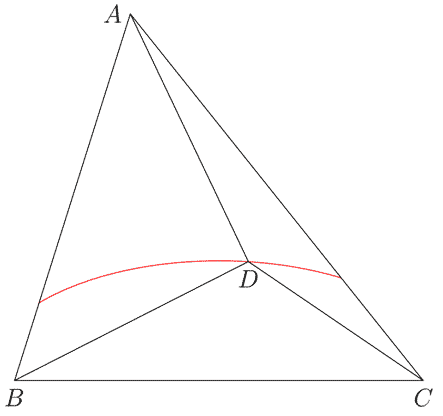Ackbach
Gold Member
MHB
- 4,148
- 94
Here is this week's POTW:
-----
Suppose $A, B, C,$ and $D$ are points in the plane such that no three of them are collinear. If $D$ is in the interior of $\triangle ABC$, show that $| AB |+| BD |+| CD | < | AB |+| BC |+| CA |$.
Note here that $|XY|$ denotes the length of segment $XY$.
-----
Remember to read the http://www.mathhelpboards.com/showthread.php?772-Problem-of-the-Week-%28POTW%29-Procedure-and-Guidelines to find out how to http://www.mathhelpboards.com/forms.php?do=form&fid=2!
-----
Suppose $A, B, C,$ and $D$ are points in the plane such that no three of them are collinear. If $D$ is in the interior of $\triangle ABC$, show that $| AB |+| BD |+| CD | < | AB |+| BC |+| CA |$.
Note here that $|XY|$ denotes the length of segment $XY$.
-----
Remember to read the http://www.mathhelpboards.com/showthread.php?772-Problem-of-the-Week-%28POTW%29-Procedure-and-Guidelines to find out how to http://www.mathhelpboards.com/forms.php?do=form&fid=2!
